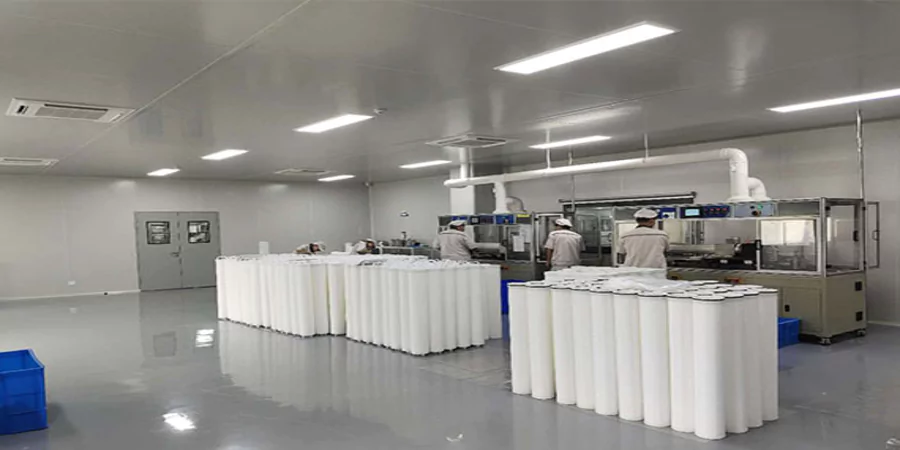The contemporary hotel category has exploded over the past decade, growing from a niche design-focused segment to a $47 billion global market according to STR Global’s 2024 Hotel Census. Yet despite countless hotels marketing themselves as “contemporary,” “modern,” or “design-forward,” travelers struggle to distinguish genuinely innovative properties from traditional hotels with superficial renovations. The difference matters authentic contemporary hotels deliver experiences centered on thoughtful design, technology integration, local cultural expression, and spaces that function as social destinations rather than merely places to sleep. According to a 2024 survey by Skift Research, 68% of travelers under 45 prioritize hotel design and aesthetic when booking, yet 54% report difficulty identifying hotels that match their style preferences through standard booking platforms. This guide provides practical strategies for finding contemporary hotels that align with modern traveler expectations, understanding what defines the category beyond marketing buzzwords, and evaluating whether properties deliver authentic contemporary experiences or simply contemporary branding.
Understanding What “Contemporary Hotel” Actually Means
Before searching for contemporary hotels, it’s essential to understand what distinguishes them from traditional, boutique, or luxury properties. Contemporary hotels emerged as a distinct category in the early 2000s, pioneered by brands like W Hotels, Ace Hotel, and citizenM, emphasizing design democracy, technology integration, and social space prioritization.
Defining Characteristics of Contemporary Hotels
Design Language: Contemporary hotels feature clean lines, minimal ornamentation, neutral color palettes punctuated by bold accents, and open-plan layouts that blur boundaries between public and private spaces. Unlike boutique hotels that often emphasize historical preservation or eclectic maximalism, contemporary properties favor forward-looking aesthetics.
Technology Integration: Smart room controls, mobile check-in, keyless entry, streaming-capable TVs, high-quality Wi-Fi, and abundant charging stations aren’t luxuries they’re baseline expectations. According to hospitality technology analyst Cindy Estis Green, “Contemporary hotels design around technology from conception rather than retrofitting it into existing structures. This fundamental approach creates seamless digital experiences traditional hotels can’t match.”
Space Functionality: Contemporary hotels reconceive traditional hotel layouts. Lobbies become coworking lounges, restaurants operate as neighborhood dining destinations open to non-guests, and rooftops transform into social venues. This reflects changing travel patterns business travelers need daytime workspaces, leisure travelers seek local experiences, and all travelers value Instagram-worthy moments.
Local Cultural Integration: Rather than corporate uniformity, many contemporary hotels embed local art, collaborate with neighborhood businesses, and hire local designers. This creates authentic sense of place while maintaining modern aesthetic coherence.
Democratized Access: Contemporary hotels often occupy the “accessible luxury” space delivering design quality once exclusive to five-star properties at mid-market price points through strategic efficiency. Brands like Moxy, Canopy by Hilton, and Motto by Hilton exemplify this positioning.
Tip 1 – Master Advanced Search and Filtering Techniques
Going Beyond Basic Booking Platform Filters
Standard hotel booking platforms (Booking.com, Expedia, Hotels.com) offer limited design-focused filtering. Their “modern” or “contemporary” tags often reflect self-reported property descriptions rather than verified design characteristics. However, strategic search techniques improve results:
Design Hotels Platform: Design Hotels (designhotels.com) curates 300+ properties specifically selected for design excellence. While not exclusively contemporary the collection includes boutique and heritage properties the platform offers sophisticated filtering by architectural style, designer, and aesthetic preferences. Member properties undergo design review rather than self-classification.
Tablet Hotels and Mr & Mrs Smith: These curated platforms emphasize design-forward properties. Tablet (owned by Michelin Guide) employs anonymous inspectors who evaluate aesthetic quality, while Mr & Mrs Smith focuses on stylish properties popular with design-conscious travelers.
Instagram-Based Discovery: Search location-based hashtags like #sydneyhotels or #tokyohotels, then examine posts tagged at specific properties. Hotels frequently photographed by guests in public spaces (lobbies, rooftops, restaurants) likely deliver the social, design-forward experience contemporary travelers seek. According to social media strategist Gary Vaynerchuk, “User-generated content reveals authentic experiences marketing photos can’t capture. If guests photograph a hotel lobby unprompted, the space successfully functions as an experience destination.”
Google Image Search: Search “[city name] contemporary hotels” in Google Images, then click through to properties with appealing aesthetics. This visual-first approach bypasses text-heavy reviews and connects directly with design sensibility.
Leveraging Advanced Booking.com Filters
While Booking.com’s standard interface limits design filtering, advanced techniques improve results:
- Use specific amenity filters: “Designer boutique hotel,” “Trendy area,” “Rooftop terrace/restaurant”
- Sort by guest rating for properties opened in the last 3-5 years (newer properties more likely to feature contemporary design)
- Read recent reviews specifically mentioning “modern design,” “stylish,” or “Instagram-worthy”
- Check if properties won “Traveller Review Awards” in design-focused categories
Tip 2 – Research Hotel Groups and Independent Collections Known for Contemporary Design
Major Hotel Groups with Strong Contemporary Portfolios
Understanding which hotel companies prioritize contemporary design helps narrow searches:
Marriott International:
- Moxy (budget-contemporary with playful design)
- Edition (luxury-contemporary, Ian Schrager partnership)
- Aloft (mid-market contemporary with tech focus)
- AC Hotels (European-influenced minimalist design)
Hilton Worldwide:
- Canopy by Hilton (upscale-contemporary with local integration)
- Motto by Hilton (micro-hotel contemporary concept)
- Tempo by Hilton (lifestyle-contemporary brand launching 2025)
Hyatt Hotels:
- Andaz (boutique-contemporary with local design focus)
- Caption by Hyatt (lifestyle-contemporary targeting social media generation)
- Thompson Hotels (luxury-contemporary portfolio)
citizenM: Independent group operating exclusively contemporary “affordable luxury” properties in major cities. Standardized design language featuring compact rooms, oversized public spaces, and technology-forward amenities.
Ace Hotel: While technically boutique, Ace’s properties heavily influenced contemporary hotel aesthetics. Their design playbook mixing vintage and modern, creating community-focused public spaces, collaborating with local artists defines the category.
Independent Contemporary Hotel Indicators
For non-chain properties, certain signals suggest contemporary positioning:
Opening Date: Properties opened or fully renovated within the last 5 years more likely feature contemporary design. Older properties risk design dated by trends.
Architect/Designer Credits: Hotels prominently featuring renowned contemporary architects or designers (Philippe Starck, Tom Dixon, Rockwell Group) signal design commitment. Check hotel websites’ “About” sections or press releases.
Awards and Recognition: Properties winning Wallpaper* Design Awards, Dezeen Awards, or featured in Architectural Digest’s hotel roundups demonstrate design recognition from professional tastemakers rather than marketing self-proclamation.
Restaurant Partnerships: Contemporary hotels often partner with celebrated chefs or restaurant groups, creating dining destinations that attract locals. This indicates commitment to experience quality beyond rooms.
Tip 3 – Analyze Visual and Written Review Content Strategically
What to Look for in Guest Photos
User-generated photos on TripAdvisor, Google Reviews, and Booking.com reveal more than professional marketing imagery. Analyze guest photos for:
Public Space Quality: Abundant guest photos of lobbies, bars, and restaurants indicate these spaces successfully function as destinations. Contemporary hotels excel at public space design if guests don’t photograph these areas, the hotel may emphasize rooms over experience.
Design Consistency: Professional photos show carefully styled vignettes. Guest photos reveal whether design quality extends throughout the property or concentrates in photographed showcase areas.
Technology Visibility: Guest photos showing room control tablets, smart TVs, charging stations, or seamless technology integration confirm contemporary technology standards.
Age and Style of Furnishings: Furniture condition visible in guest photos indicates whether “contemporary” describes current reality or past renovation. Worn contemporary furniture from 2010-2015 dates poorly compared to maintained classic design.
Decoding Review Language
Certain review phrases reliably indicate contemporary properties while others signal traditional hotels with contemporary branding:
Positive Contemporary Indicators:
- “Great public spaces for working/socializing”
- “Lobby feels like a scene from a design magazine”
- “Perfect blend of style and technology”
- “Hotel integrated into the neighborhood”
- “Rooms are efficient but public spaces are amazing”
Red Flags:
- “Rooms are small” (without mentioning compensating public spaces suggests budget-cutting rather than contemporary space allocation philosophy)
- “Design over comfort” (indicates aesthetics prioritized without attention to functionality)
- “Feels sterile/cold” (suggests design misses warmth contemporary properties balance with minimalism)
- “Everything costs extra” (indicates nickel-and-diming inconsistent with contemporary value proposition)
According to hospitality researcher Dr. Anna Mattila from Penn State, “Review sentiment analysis reveals contemporary hotel success correlates with positive mentions of public spaces and technology, while luxury hotel reviews emphasize service and traditional hotel reviews mention room size and bedding. These linguistic patterns help travelers identify properties matching category expectations.”
Tip 4 – Evaluate Technology Infrastructure and Digital Experience
Pre-Booking Digital Assessment
A property’s digital presence reveals operational philosophy and technology sophistication:
Website Quality: Contemporary hotels invest in high-quality websites with immersive photography, virtual tours, and streamlined booking. Clunky websites with stock photos suggest limited investment in guest experience.
Mobile App Availability: Properties offering dedicated apps or seamless booking through hotel group apps indicate technology commitment. Look for features like mobile check-in, digital room keys, and in-app service requests.
Social Media Engagement: Active Instagram accounts with regular posts, guest feature content, and community engagement signal contemporary marketing understanding. Hotels treating social media as afterthoughts often treat design and technology similarly.
Online Check-In Options: Properties offering advance online check-in, room selection, and express arrival demonstrate technology integration that extends throughout operations.
On-Property Technology Expectations
Genuine contemporary hotels deliver seamless technology experiences:
Room Controls: Integrated tablets or apps controlling lighting, temperature, blinds, and entertainment rather than multiple separate switches and remotes.
Connectivity: Enterprise-grade Wi-Fi supporting streaming, video calls, and multiple devices simultaneously. Contemporary hotels recognize connectivity as essential utility, not premium amenity.
Entertainment: Smart TVs with streaming app access (Netflix, YouTube, Spotify) using guest accounts rather than limited cable channels.
Charging Infrastructure: Abundant USB and USB-C charging points at bedsides, desks, and public spaces eliminating the adapter hunt.
Contactless Service: Digital concierge services, QR code-based menus and information, and minimal physical touchpoints (accelerated by COVID but now permanent contemporary hotel features).
Tip 5 – Understand Regional and Destination-Specific Contemporary Hotel Landscapes
Contemporary Hotel Concentration by Region
Contemporary hotels cluster in specific destination types:
Primary Markets:
- Major gateway cities (New York, London, Tokyo, Singapore)
- Tech hubs (San Francisco, Austin, Berlin, Tel Aviv)
- Cultural capitals (Paris, Copenhagen, Melbourne)
- Beach resort destinations modernizing (Tulum, Bali, Southern Highlands Australia)
Secondary Markets: Contemporary hotel availability decreases in secondary markets and small towns where demand can’t support specialized positioning. In these destinations, newer franchise properties (Aloft, Moxy, AC Hotels) may represent best contemporary options.
Destination-Specific Search Strategies
Urban Destinations: Search neighborhoods favored by creative professionals and young travelers. Contemporary hotels gravitate toward areas like Brooklyn (not Midtown Manhattan), Kreuzberg (not Charlottenburg), or Shibuya (not Ginza).
Resort Destinations: Look for properties marketing to younger demographics, emphasizing design and experience over traditional resort amenities. Properties with DJ-focused pool parties, contemporary art installations, or coworking spaces indicate contemporary positioning.
Regional Examples – Australian Contemporary Hotel Scene:
Australia’s contemporary hotel market has evolved significantly, particularly in wine regions and coastal areas. The Southern Highlands region south of Sydney exemplifies this trend, with several properties reimagining country retreats for contemporary sensibilities.
Southern Highlands accommodation has shifted from traditional bed-and-breakfasts toward design-forward properties featuring local art, regional cuisine, and modern amenities while maintaining the area’s rural character. Properties like Centennial Vineyards Estate and Peppers Craigieburn blend contemporary architecture with heritage landscapes, creating quintessentially Australian contemporary experiences.
This regional pattern repeats globally secondary destinations near major cities (Catskills/New York, Cotswolds/London, Yarra Valley/Melbourne) see contemporary hotel development as travelers seek design quality beyond urban centers.
Avoiding Common Contemporary Hotel Selection Mistakes
Mistaking “Trendy” for “Contemporary”
Trend-chasing differs from thoughtful contemporary design. Hotels heavily featuring current trends (maximalist patterns in 2018, millennial pink in 2019, pandemic-era sage green) date quickly. Timeless contemporary design balances current aesthetics with enduring principles quality materials, functional layouts, and flexibility adapting to changing guest needs.
Overlooking Functionality for Aesthetics
Some properties prioritize Instagram-worthy design over practical functionality. Warning signs include:
- Rooms too small for luggage storage
- Impractical sinks/bathrooms prioritizing looks over usability
- Insufficient lighting despite dramatic fixtures
- Uncomfortable furniture chosen purely for visual impact
Cornell University’s School of Hotel Administration research shows guest satisfaction correlates more strongly with functional design than pure aesthetics. The best contemporary hotels balance both dimensions.
Expecting Traditional Service in Contemporary Settings
Contemporary hotels often reimagine service delivery self-service kiosks, limited front desk staffing, digital-first communication. Travelers expecting traditional concierge services and constant staff availability may find contemporary properties disappointing. Understanding operational models prevents mismatched expectations.
Budget Considerations Across Contemporary Hotel Categories
Contemporary hotels span wide price ranges, but value equations differ from traditional categories:
Budget Contemporary ($80-150/night): Brands like Moxy, Ibis Styles, and citizenM deliver contemporary design at accessible prices through strategic efficiency smaller rooms, self-service models, limited amenities, but maintaining design quality and technology.
Mid-Market Contemporary ($150-300/night): Properties like Canopy by Hilton, Ace Hotels, and Kimpton offer fuller amenities, larger rooms, and enhanced service while maintaining contemporary aesthetics and technology focus.
Luxury Contemporary ($300-800+/night): Edition, Aman, Six Senses, and independent luxury contemporary properties deliver comprehensive service, exceptional design, unique experiences, and often celebrity architect/designer pedigrees.
Financial advisor and travel expert Chris Hutchins notes: “Contemporary hotels often provide better value than traditional properties at similar price points by allocating budgets toward guest-visible design and technology rather than back-of-house infrastructure and traditional service models. Budget-conscious travelers maximizing experience quality relative to spend often find contemporary properties deliver superior perceived value.”
Future Trends Shaping Contemporary Hotel Evolution
Understanding emerging trends helps identify forward-thinking properties likely to remain relevant:
Sustainability Integration: Contemporary hotels increasingly embed sustainability as design principle rather than add-on feature. Properties achieving LEED certification, featuring local/reclaimed materials, and implementing circular economy principles represent evolved contemporary thinking.
Hybrid Work Accommodation: Properties adding dedicated coworking floors, soundproof phone booths, and extended-stay options recognize remote work permanence. Hotels adapting to “workcation” demand demonstrate contemporary hospitality understanding.
Wellness Beyond Spas: Rather than traditional spa facilities, contemporary hotels integrate wellness through circadian lighting, air purification systems, outdoor spaces, and healthy F&B options addressing wellness holistically rather than as separate amenity.
Community Integration: Future contemporary hotels will further blur boundaries between hotel and neighborhood, functioning as community anchors with public restaurants, retail, coworking, and events generating revenue beyond room nights while creating authentic local connections.
Making the Final Selection Decision
After researching options, evaluating several properties simultaneously helps clarify choices:
- Create Comparison Matrix: List finalist properties with ratings for design quality, technology offerings, location, price, and review sentiment
- Examine Room Types Carefully: Many contemporary hotels feature significantly different room categories smallest rooms may be too compact while mid-tier options provide better value
- Read Recent Reviews (Last 3-6 Months): Recent feedback reflects current operations and identifies recent deterioration or improvement
- Check Cancellation Policies: Flexible cancellation allows booking while continuing research, canceling if better options emerge
- Contact Properties Directly: Well-run contemporary hotels respond quickly to inquiries via social media or chat. Response quality indicates operational attention to detail
Travel journalist Nora Walsh advises: “The best contemporary hotel for you balances your specific priorities. Business travelers emphasize technology and workspace. Leisure travelers prioritize design and social spaces. Solo travelers want public areas facilitating connection. Identify your primary decision drivers, then select properties excelling in those dimensions rather than chasing generic ‘best’ rankings.”
Booking Strategies for Contemporary Hotels
Timing and Platform Selection
Direct Booking Benefits: Many contemporary hotel groups offer price matching guarantees plus additional perks (room upgrades, late checkout, amenity credits) for direct bookings. Check hotel websites before booking through OTAs.
Loyalty Program Value: Major hotel groups (Marriott, Hilton, Hyatt) offer free loyalty membership with benefits including guaranteed room availability, points earning, and status upgrades. For frequent travelers, loyalty programs deliver significant value.
OTA Advantages: Third-party platforms occasionally offer exclusive deals or reward points (Booking.com Genius, Expedia Rewards). Compare total value including rewards rather than only room rates.
Flash Sale Opportunities: Contemporary hotels utilize dynamic pricing algorithms creating occasional dramatic discounts during low-demand periods. Apps like HotelTonight specialize in last-minute contemporary hotel deals.
Maximizing Your Contemporary Hotel Experience
Once booked, strategic approaches enhance stays:
Explore Public Spaces: Contemporary hotels invest heavily in lobbies, rooftops, and restaurants. Spending time in these spaces maximizes value and creates opportunities for memorable experiences and local connections.
Leverage Technology: Utilize mobile apps, digital concierge services, and room controls rather than defaulting to traditional phone-based service. Contemporary hotels optimize these digital channels.
Engage with Programming: Many contemporary properties offer events, art exhibitions, DJ sets, or workshops. Participating connects with local culture and other guests.
Provide Feedback: Contemporary hotels actively seek guest input for continuous improvement. Constructive feedback (positive or negative) via post-stay surveys or social media helps properties refine experiences.
The Value of Authentic Contemporary Hotel Experiences
Finding genuine contemporary hotels that deliver thoughtful design, seamless technology, and memorable experiences requires moving beyond basic searches and surface-level marketing. The strategies outlined understanding category definitions, leveraging specialized platforms, analyzing visual content strategically, evaluating technology sophistication, and understanding regional landscapes empower travelers to identify properties matching contemporary expectations rather than settling for contemporary branding masking traditional experiences.
The contemporary hotel category continues evolving as guest preferences shift, technology advances, and hospitality innovation accelerates. Properties demonstrating authentic commitment to contemporary principles prioritizing guest experience over operational convenience, investing in design quality at all price points, embracing technology as enabler rather than gimmick, and creating spaces fostering connection will continue differentiating themselves in increasingly competitive markets.
For travelers seeking contemporary hotel experiences that exceed generic searches and obvious choices, investing time in strategic research yields dividends in memorable stays that justify the category’s premium positioning. Whether exploring urban destinations, regional escapes, or resort environments, contemporary hotels at their best transform accommodation from necessary logistics into integral components of travel experiences worth savoring and remembering.
















